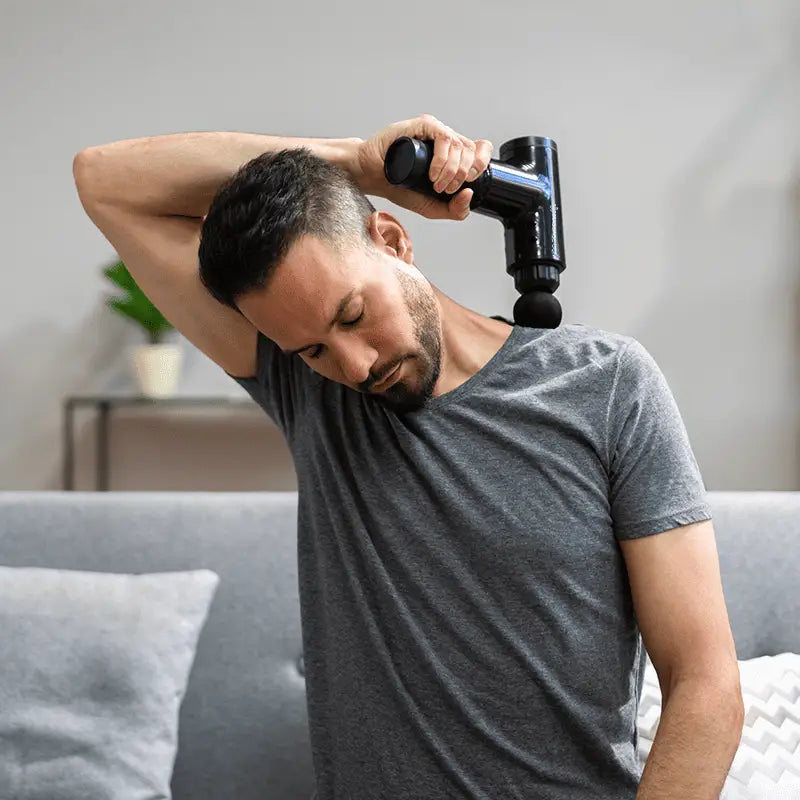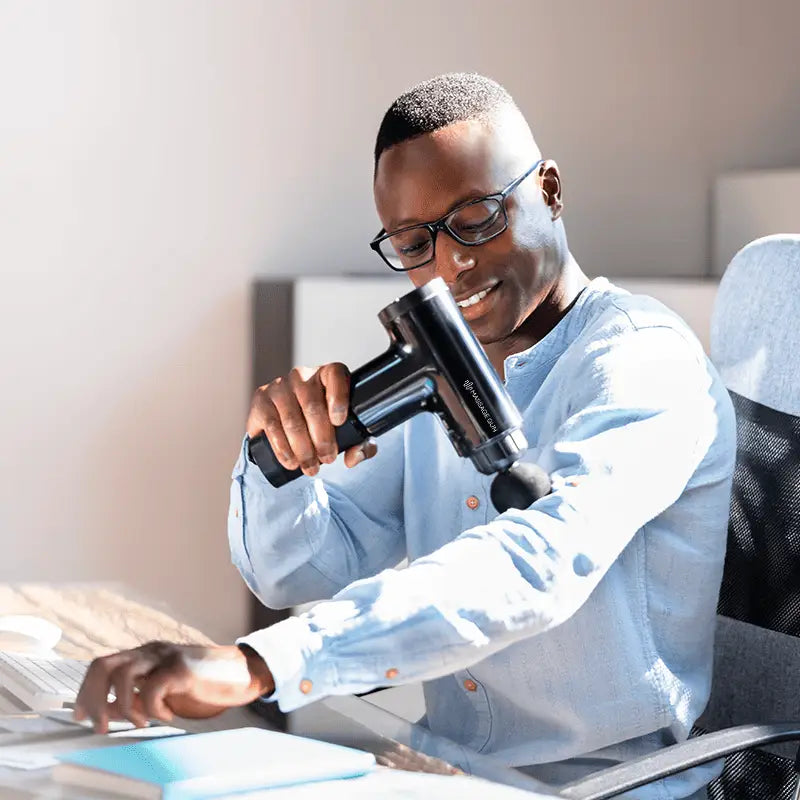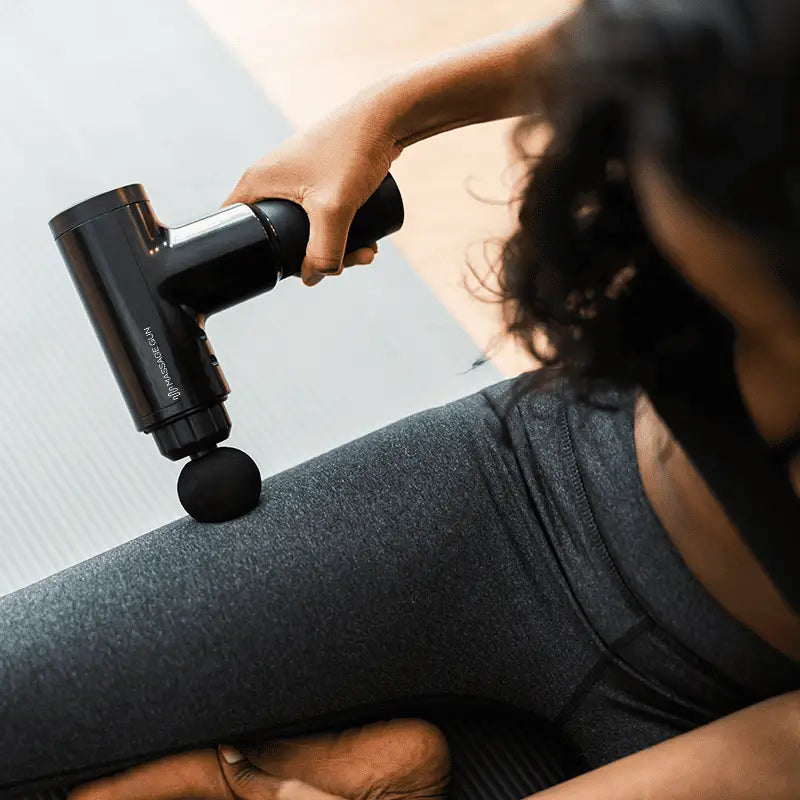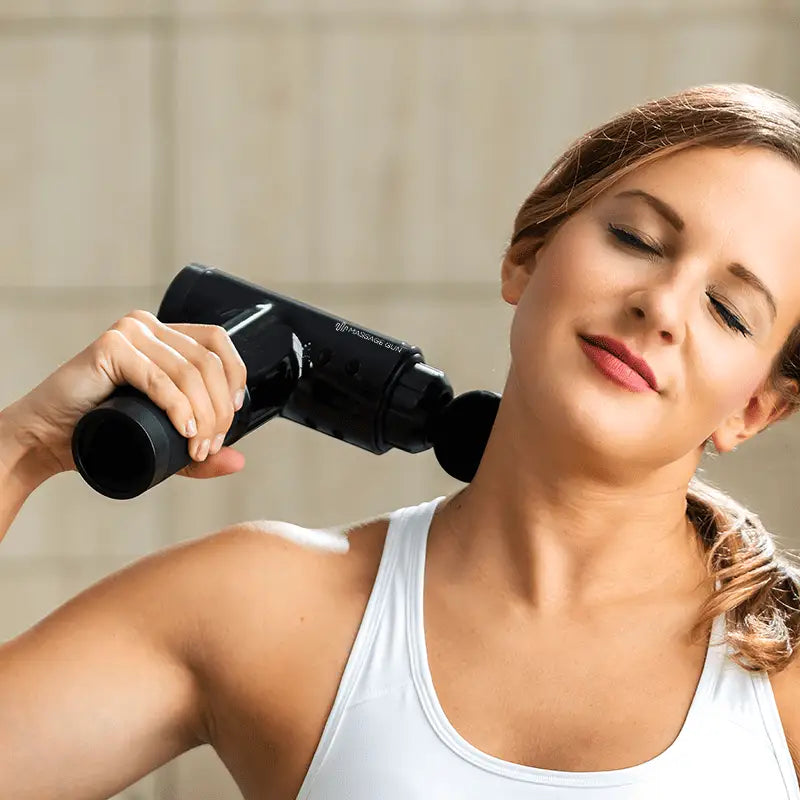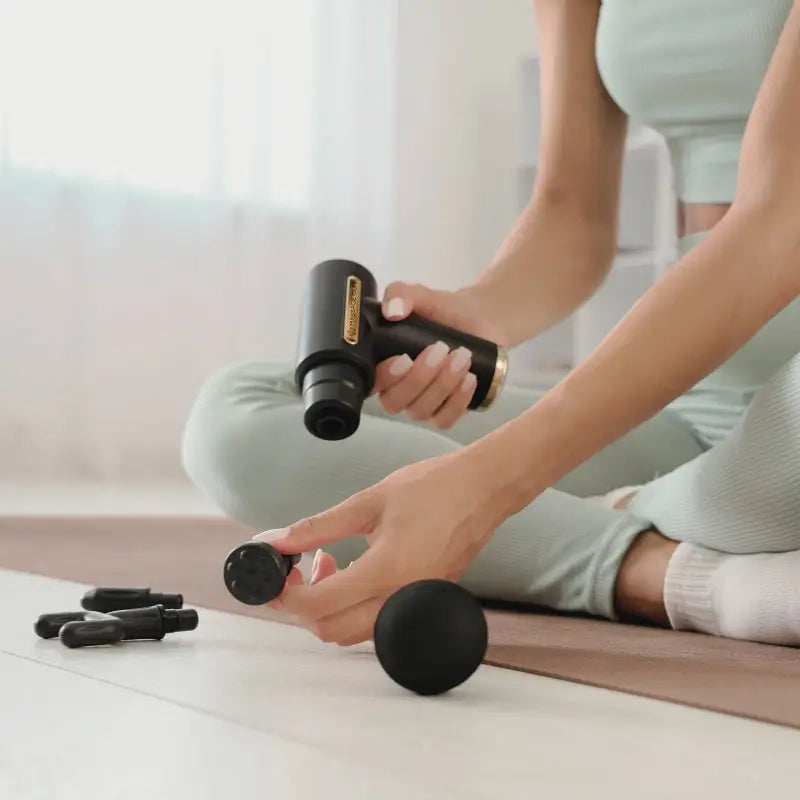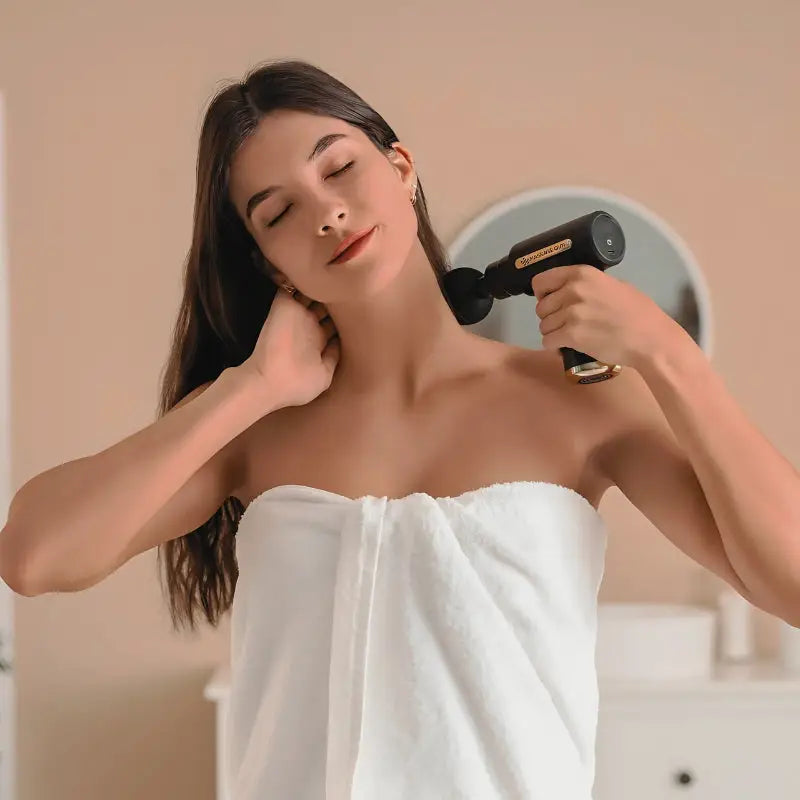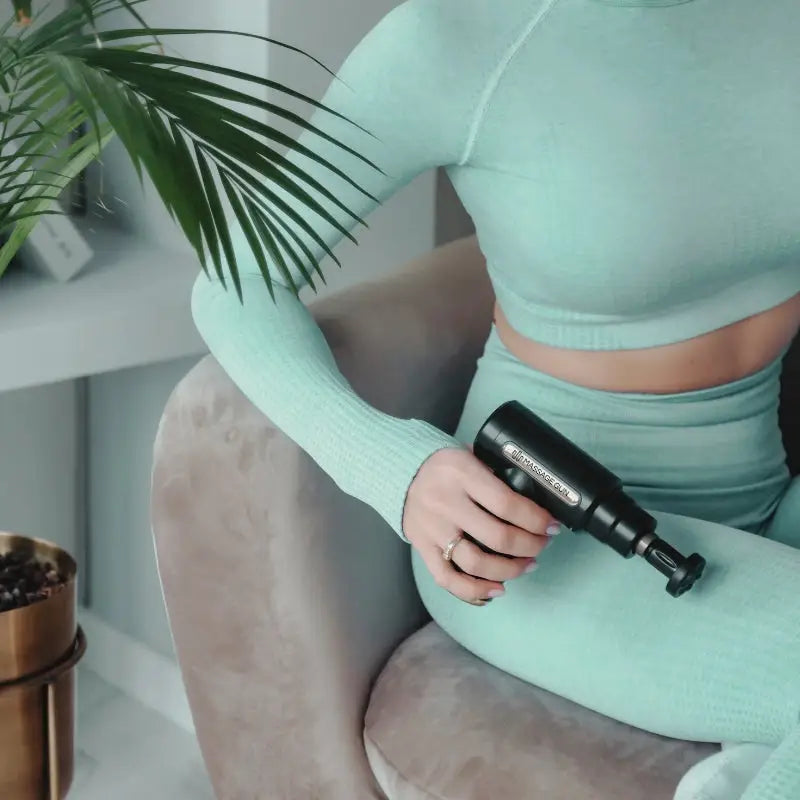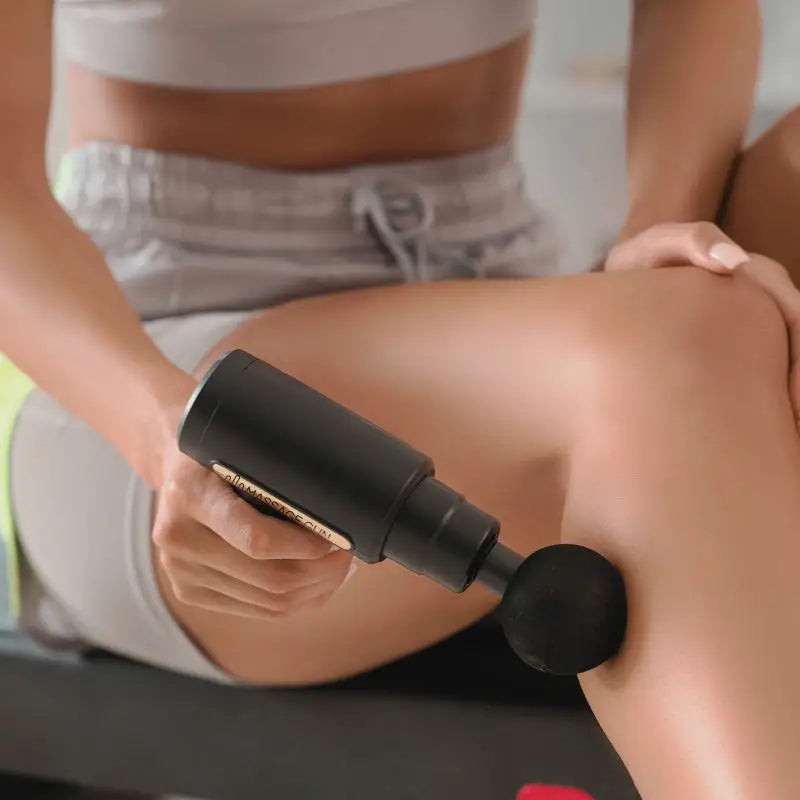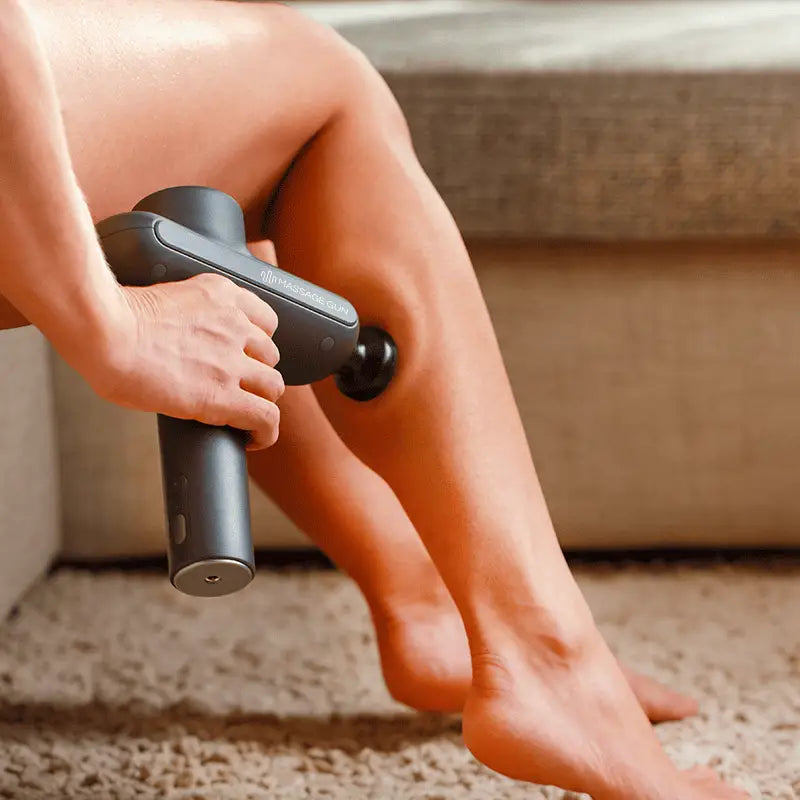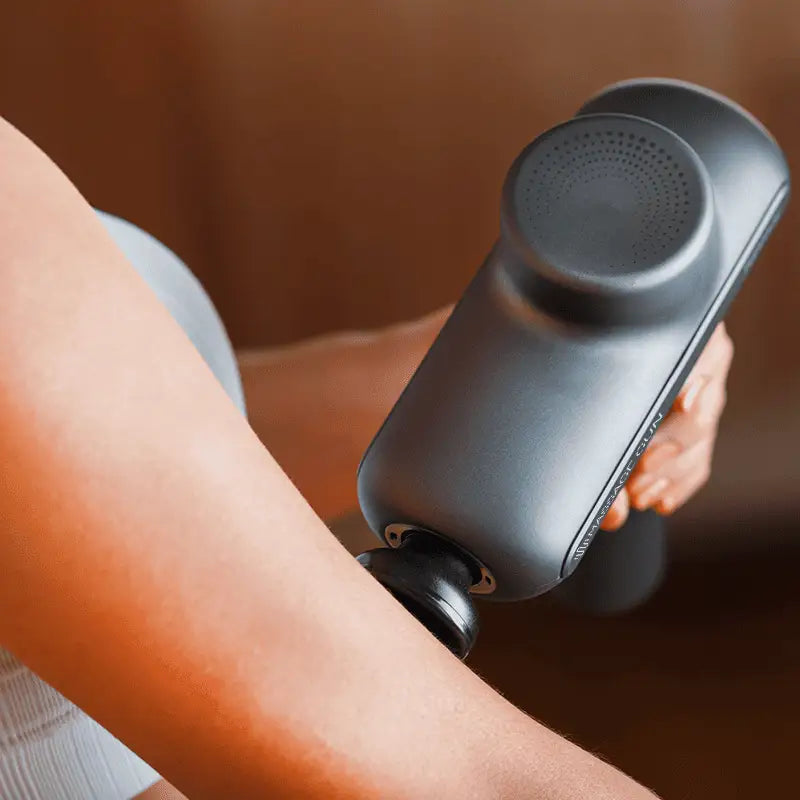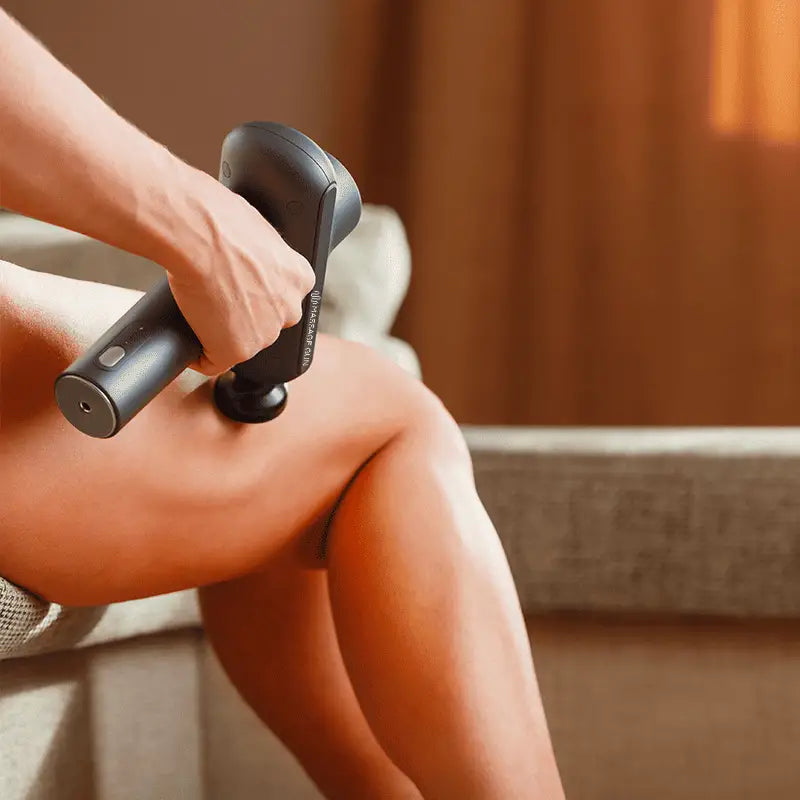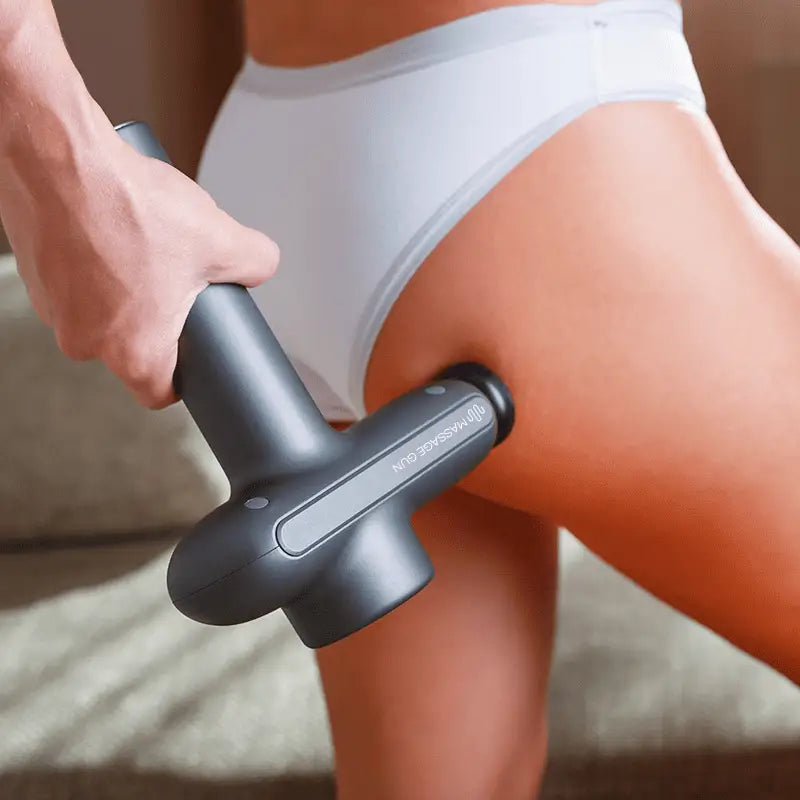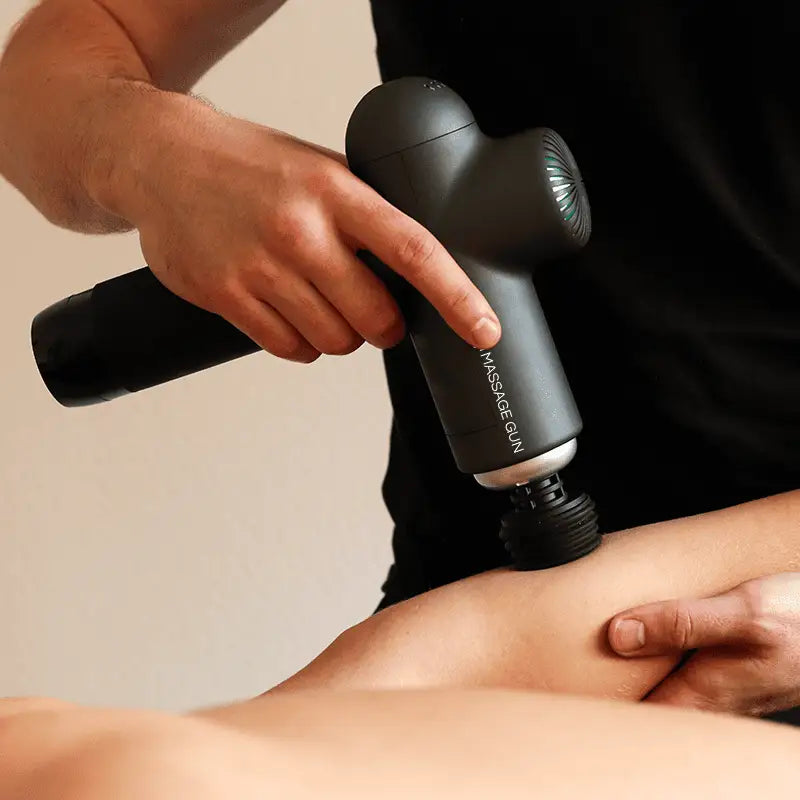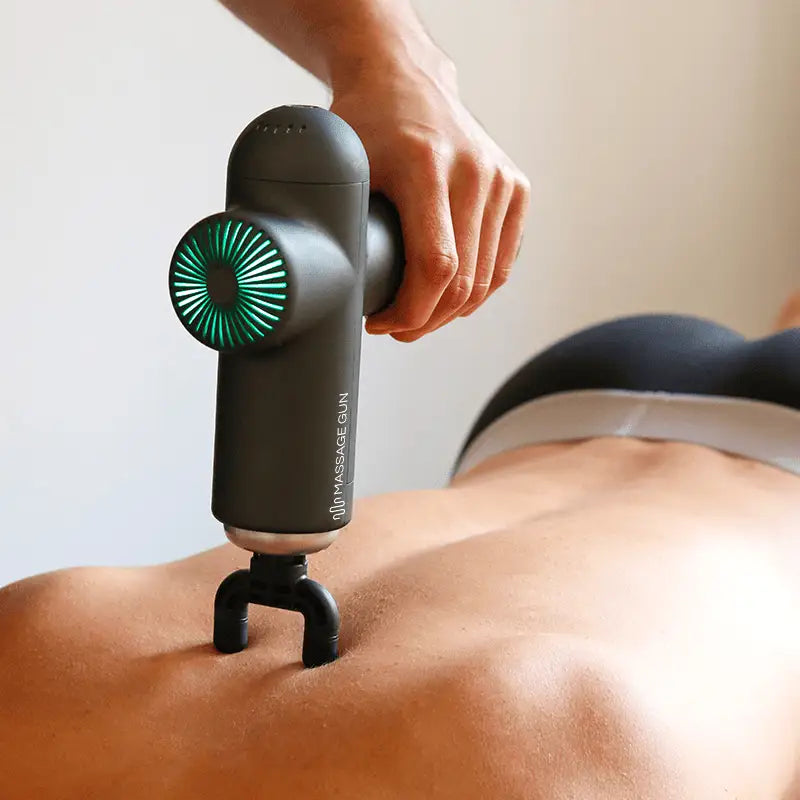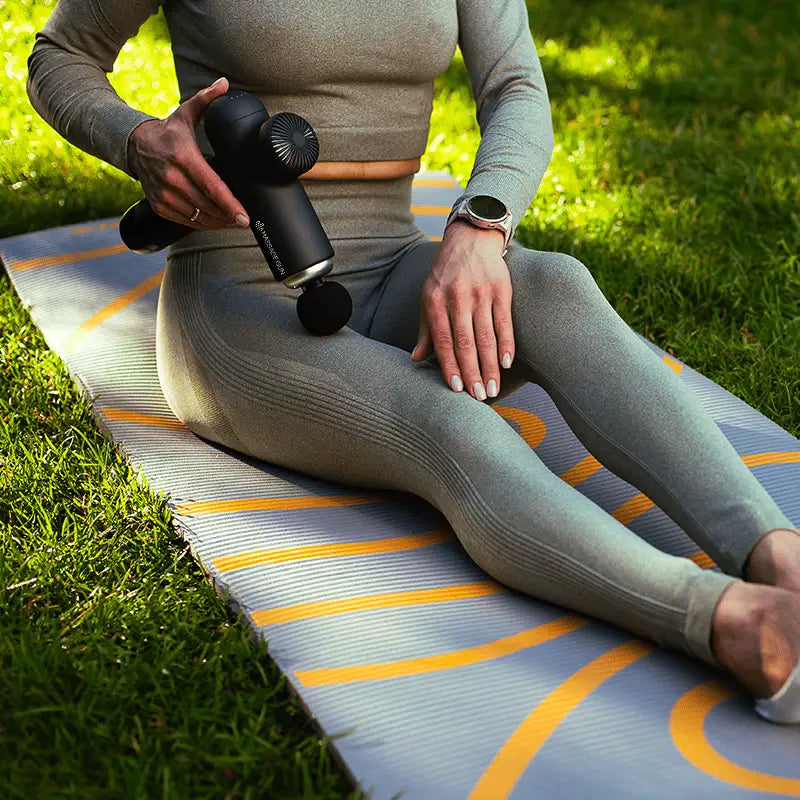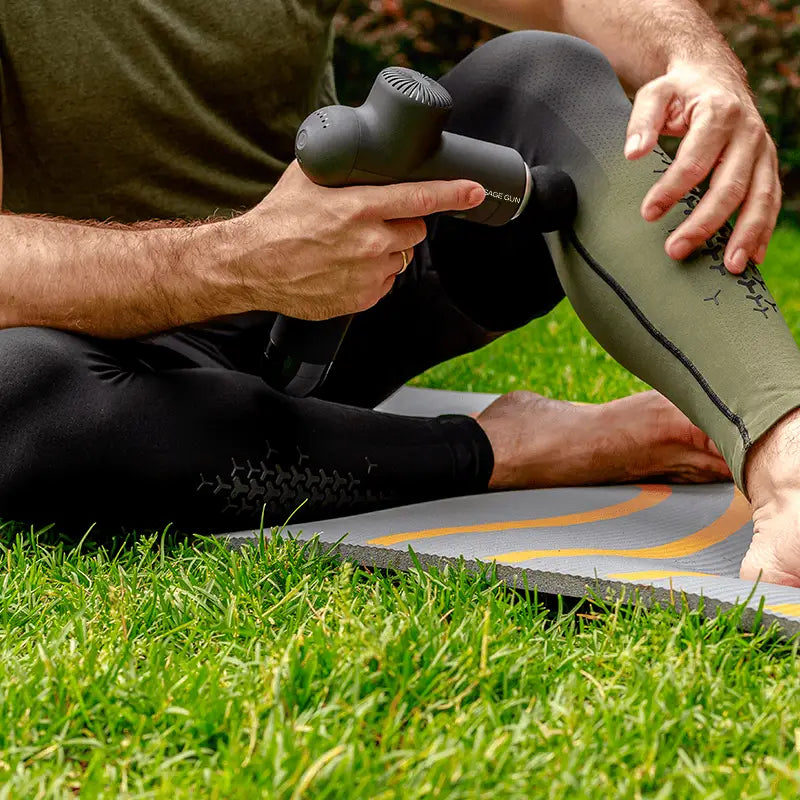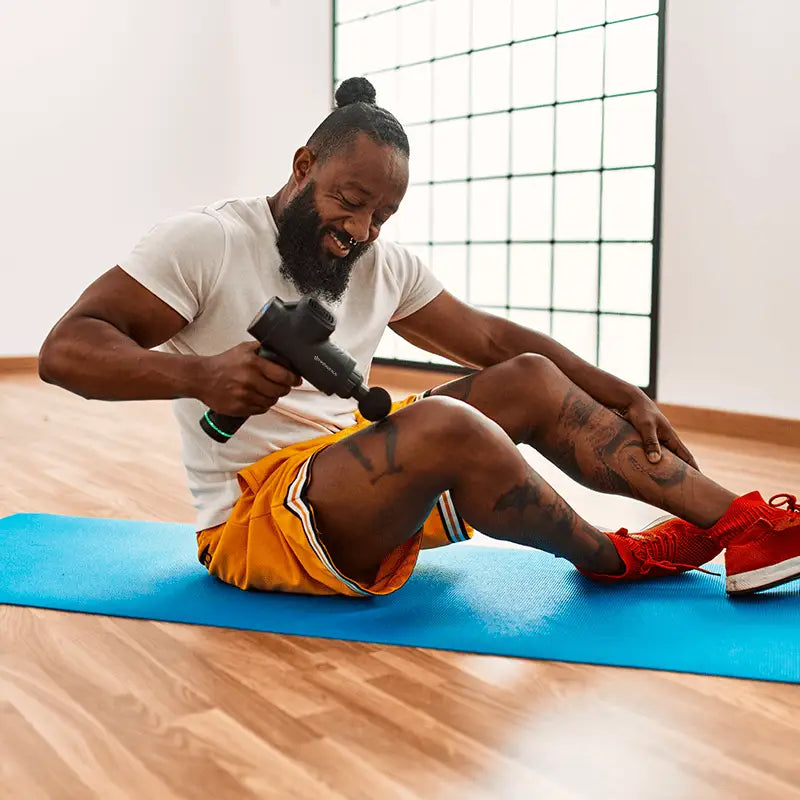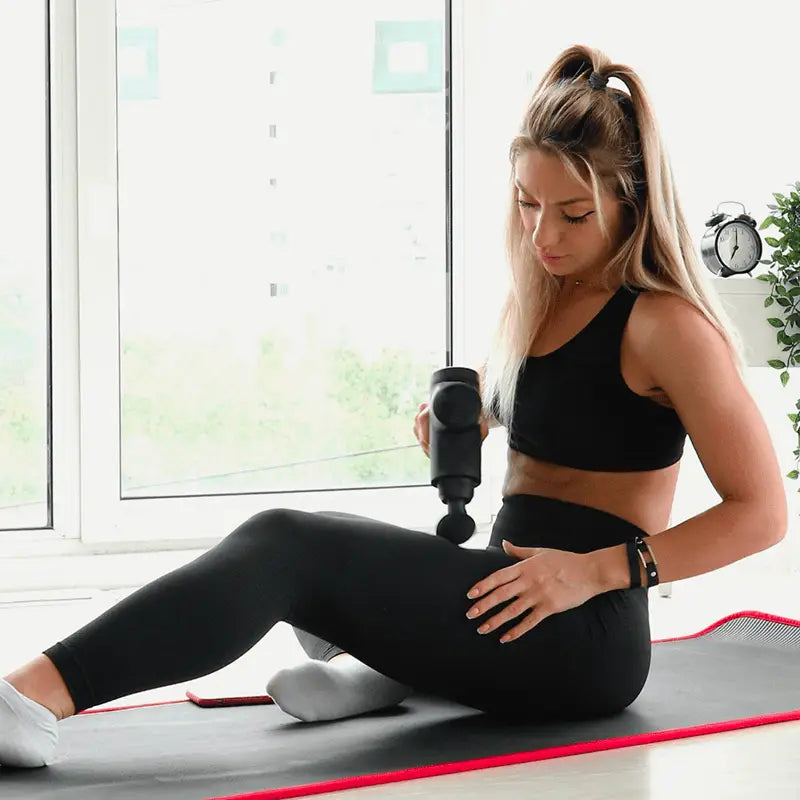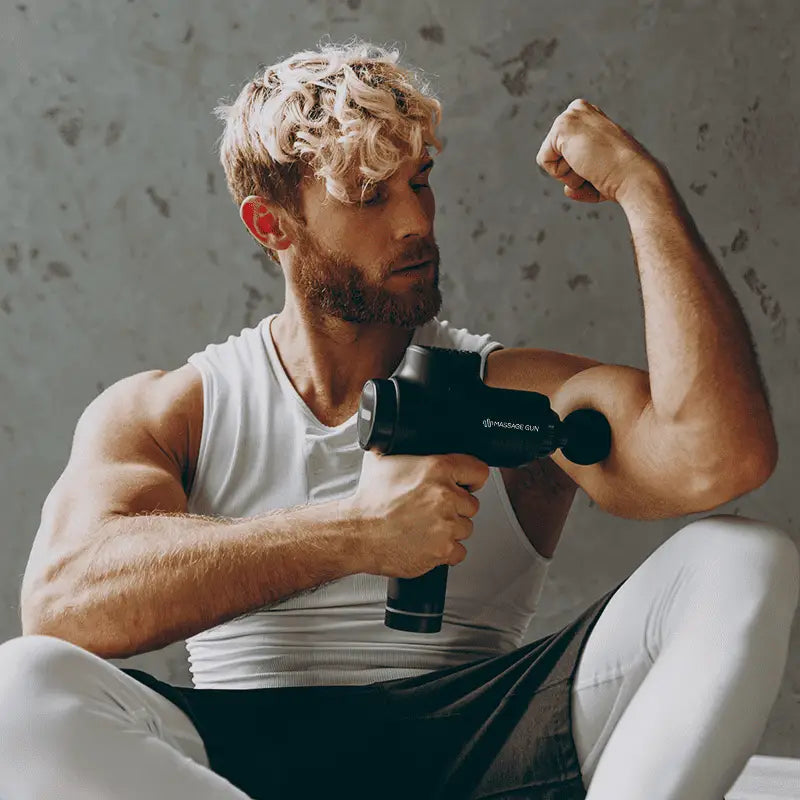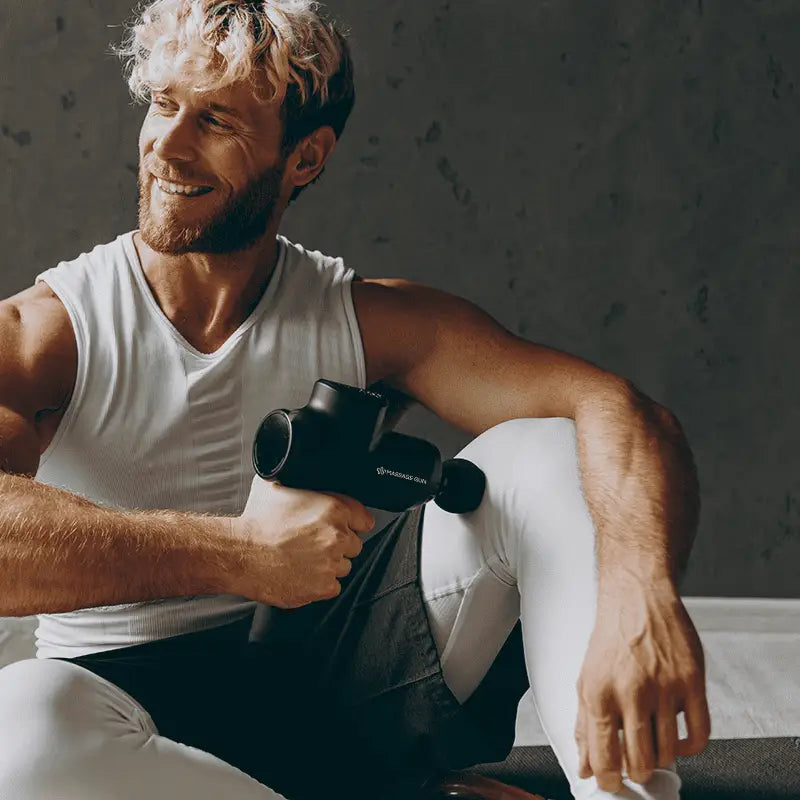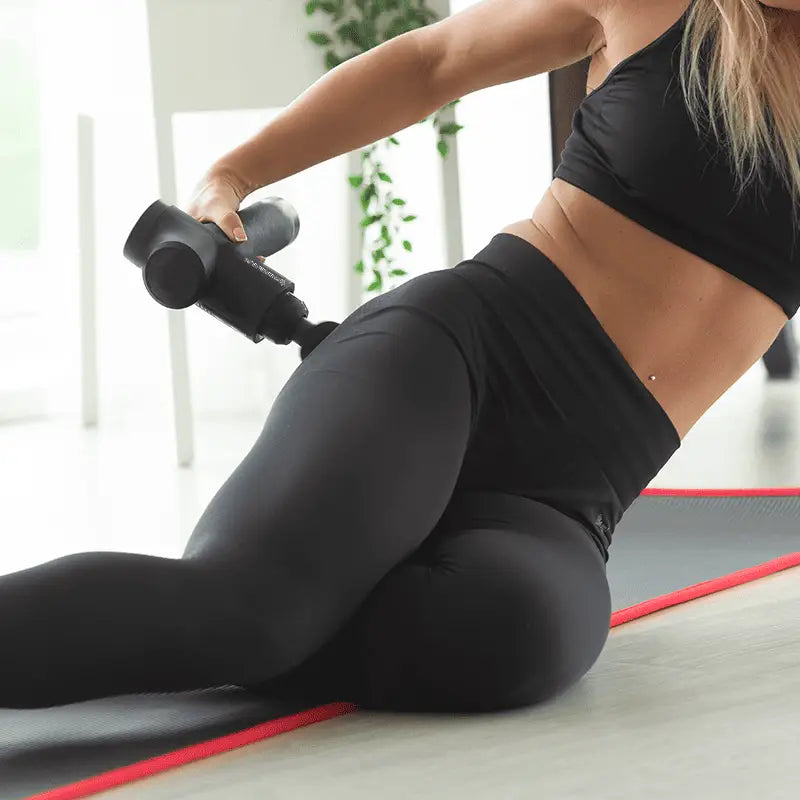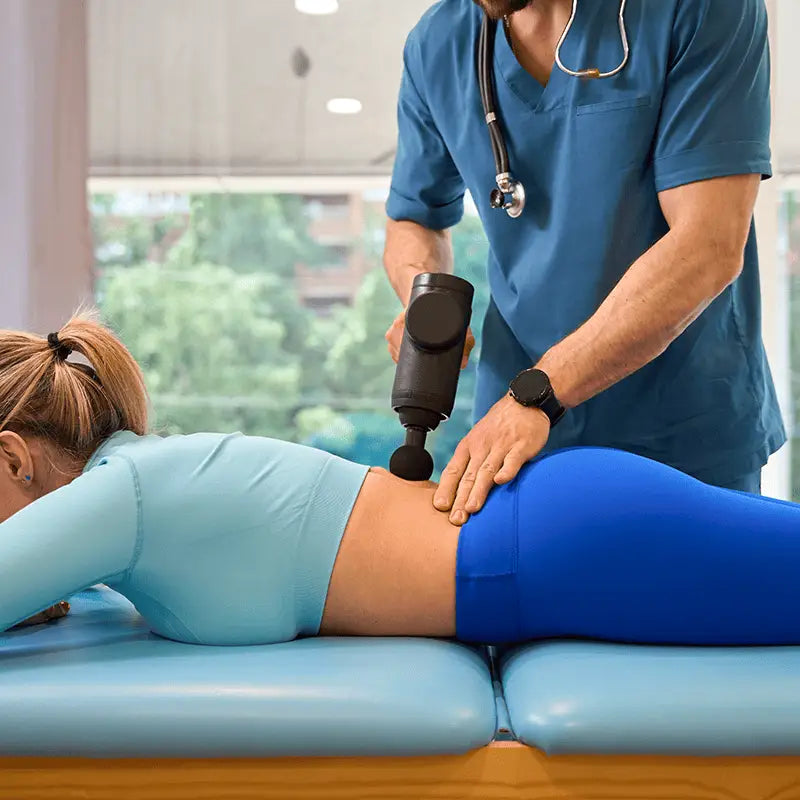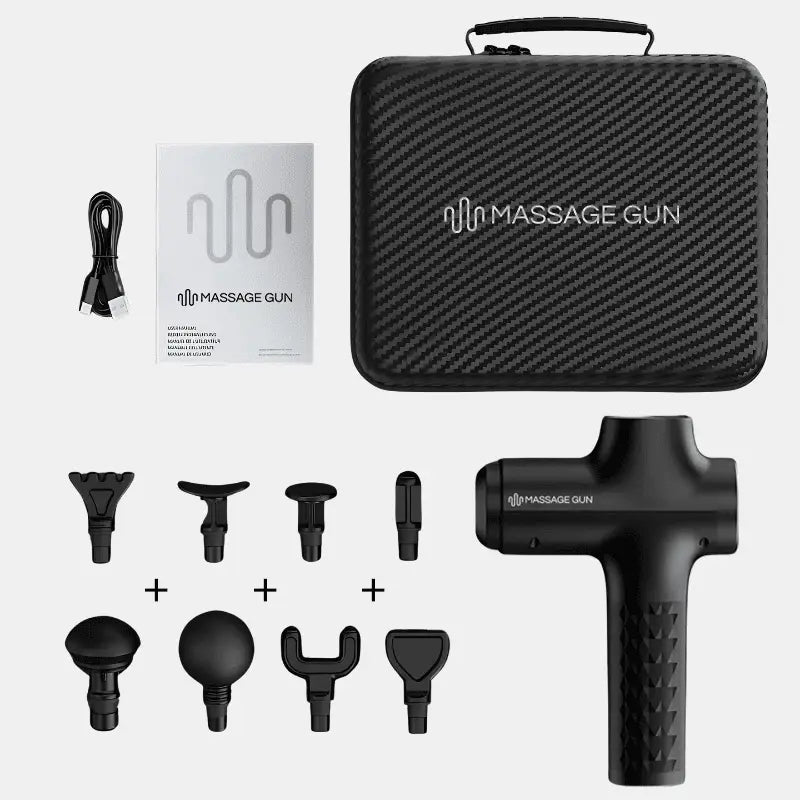Les pistolets de massage sont devenus un outil populaire pour améliorer la récupération musculaire, mais les pistolets de massage aident-ils à la récupération, et comment fonctionnent-ils ? Ces appareils promettent de réduire la douleur, d'atténuer la tension musculaire et de favoriser la récupération en améliorant la circulation sanguine.
Dans cet article, nous explorerons comment les pistolets de massage à percussion aident à la récupération, les avantages de leur utilisation, les risques potentiels et comment utiliser un Massage Gun efficacement.
Que vous soyez un athlète ou une personne cherchant à soulager la douleur après un entraînement, comprendre comment les pistolets de massage impactent la récupération est essentiel pour maximiser leur utilisation.
Comment les pistolets de massage favorisent-ils la récupération ?
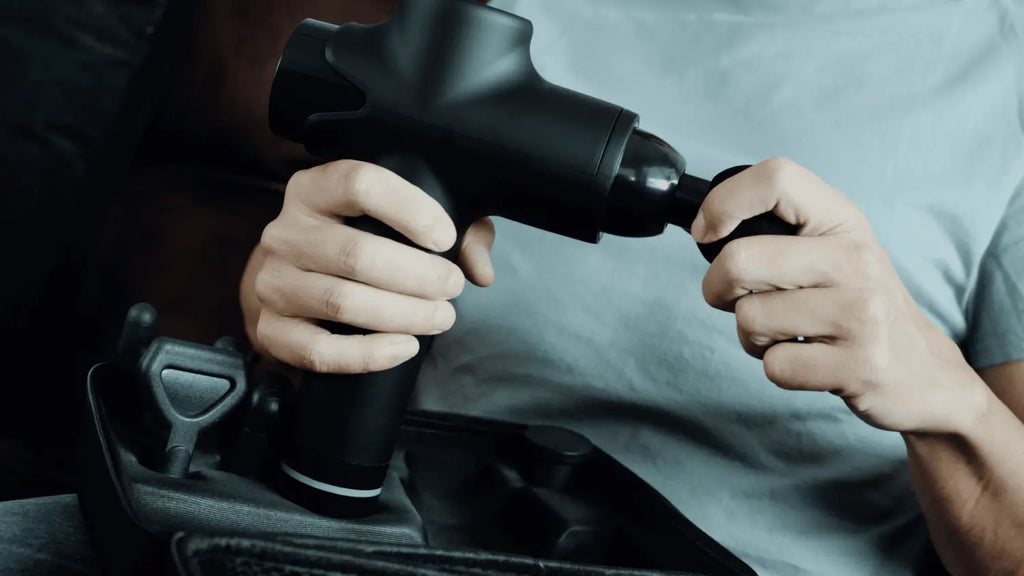
Amélioration de la circulation sanguine
Les pistolets de massage utilisent la thérapie percussive pour stimuler la circulation sanguine dans les groupes musculaires ciblés. Cette circulation accrue aide à fournir de l'oxygène et des nutriments au tissu musculaire, favorisant une guérison plus rapide. Une meilleure circulation contribue également à réduire l'accumulation d'acide lactique, ce qui est courant après l'exercice et peut provoquer des douleurs musculaires.
En améliorant la circulation sanguine, les pistolets de massage peuvent également aider à réduire la douleur et la sensibilité musculaires après un entraînement, en faisant un outil efficace pour la récupération.
Réduction des douleurs musculaires retardées (DOMS)
Les pistolets de massage sont couramment utilisés pour aider à réduire la douleur musculaire retardée (DOMS), qui survient après une activité physique intense. En détruisant le tissu cicatriciel et en réduisant la tension musculaire, la thérapie percussive aide à soulager la douleur et la raideur.
De nombreuses personnes ressentent une douleur après l'exercice, et les pistolets de massage peuvent aider à soulager cette douleur en ciblant les groupes musculaires affectés. Cet avantage en fait un outil de récupération essentiel pour les athlètes et les amateurs de fitness.
Amélioration de l'amplitude de mouvement et de la flexibilité
Une utilisation régulière des pistolets de massage a été démontrée pour augmenter la flexibilité et améliorer l'amplitude de mouvement en relâchant les muscles tendus et en améliorant l'élasticité des tissus. Cet effet est particulièrement bénéfique pour les personnes qui pratiquent une activité physique régulière, car il peut prévenir les blessures en améliorant la flexibilité musculaire.
La thérapie percussive aide également à réduire la rigidité musculaire, permettant aux utilisateurs de maintenir une bonne mobilité et d'éviter les tensions. Avec le temps, l'utilisation d'un Massage Gun peut contribuer à une meilleure santé musculaire globale et à de meilleures performances.
Augmentation du drainage lymphatique
Le drainage lymphatique est un autre avantage de la thérapie Massage Gun. En stimulant le système lymphatique, les pistolets de massage aident à réduire l'enflure et à éliminer les toxines du corps, ce qui favorise une récupération musculaire plus rapide.
Cette thérapie peut également aider à la rééducation après une blessure en réduisant l'inflammation et en facilitant la cicatrisation des tissus mous. Pour ceux qui souffrent de blessures ou qui pratiquent une activité physique intense, les pistolets de massage peuvent soutenir la récupération en favorisant une meilleure fonction lymphatique.
Preuves scientifiques soutenant les bienfaits des pistolets de massage
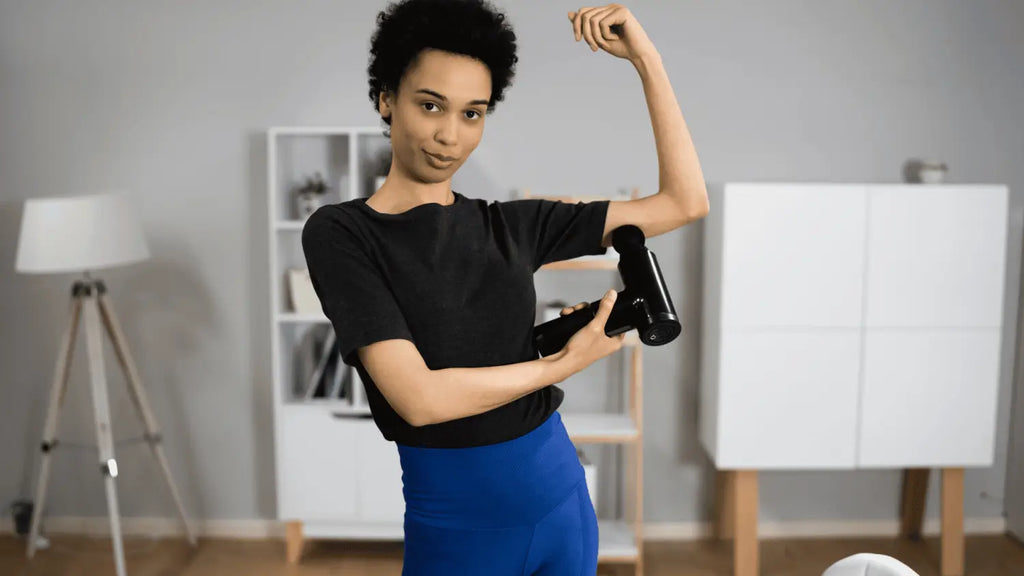
Le rôle de la thérapie percussive dans la récupération
La thérapie percussive, utilisée dans le traitement Massage Gun, est soutenue scientifiquement pour améliorer les résultats de récupération. Des études publiées dans le journal de physiothérapie mettent en évidence comment la thérapie Massage Gun peut augmenter le flux sanguin, améliorer la flexibilité musculaire et réduire la douleur après l'exercice.
Ces études scientifiques confirment que la thérapie percussive est un outil efficace pour réduire la douleur musculaire et favoriser une récupération plus rapide, en faisant une partie essentielle de la routine post-entraînement.
Recherche sur les résultats de récupération à court terme
Les recherches sur les pistolets de massage montrent qu'ils sont efficaces pour la récupération à court terme en réduisant la douleur et en accélérant la guérison. Une revue systématique a trouvé que les pistolets de massage peuvent aider à améliorer la circulation, réduire l'accumulation d'acide lactique, et soulager la douleur après l'exercice.
Ces avantages font des pistolets de massage un choix populaire pour les athlètes cherchant à accélérer leur processus de récupération. Les résultats actuels de la recherche suggèrent que les pistolets de massage fonctionnent mieux lorsqu'ils sont utilisés peu après l'entraînement, pendant la période de récupération où les muscles sont les plus réactifs au traitement.
Preuves d'une amélioration de la fonction musculaire
Il existe de plus en plus de preuves que les pistolets de massage aident à améliorer la fonction musculaire en réduisant la tension musculaire et en augmentant le flux sanguin vers les groupes musculaires. Cet effet peut conduire à une meilleure force, flexibilité et performance globale.
Une utilisation régulière d'un Massage Gun peut également aider à réduire le risque de blessure en favorisant une fonction musculaire saine et prévenir la rigidité. La recherche scientifique soutient l'utilisation des pistolets de massage comme un outil efficace de récupération, en particulier pour ceux qui pratiquent régulièrement de l'exercice ou des activités physiques intenses.
Risques et limites des pistolets de massage
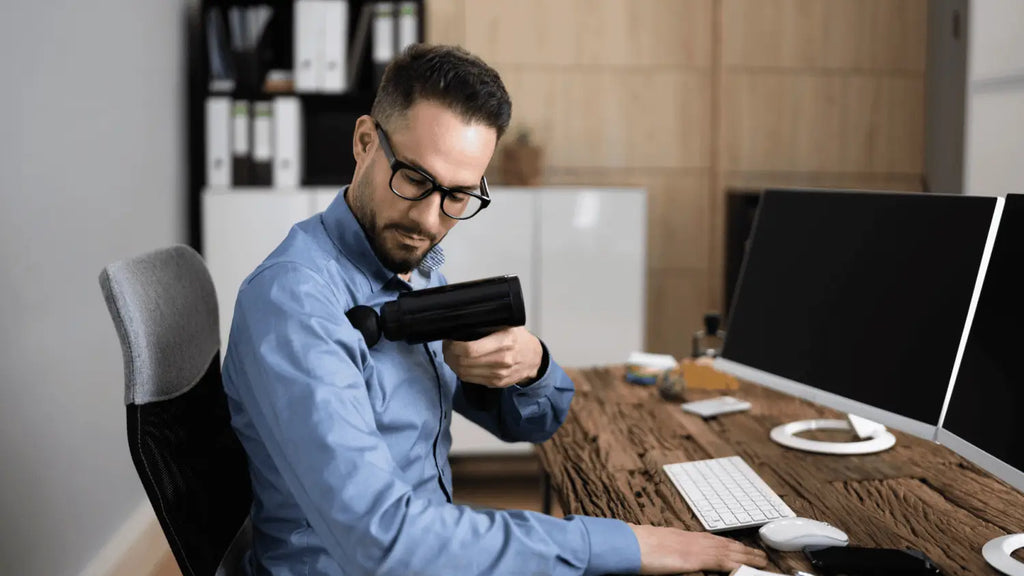
Blessures par surutilisation et application incorrecte
Bien que les pistolets de massage offrent de nombreux avantages, une pression excessive ou une utilisation prolongée de l'appareil peut entraîner des blessures. Les personnes qui utilisent un Massage Gun de manière incorrecte peuvent ressentir une gêne musculaire ou aggraver des blessures existantes.
Pour éviter ces problèmes, il est important de suivre les directives d'utilisation appropriées et d'éviter la surutilisation de l'appareil. Les professionnels de la santé recommandent de commencer avec des réglages d'intensité plus faibles et d'augmenter progressivement la pression en fonction du confort et de la taille du groupe musculaire.
Conditions où il faut éviter l'utilisation de pistolets de massage
Les pistolets de massage ne conviennent pas à tout le monde, en particulier à ceux souffrant de certaines conditions médicales. Les personnes avec des blessures musculosquelettiques, comme des déchirures musculaires, ou des conditions telles que la thrombose veineuse profonde, devraient éviter l'utilisation de pistolets de massage, car cela pourrait aggraver la blessure ou causer un inconfort supplémentaire.
Il est toujours préférable de consulter un physiothérapeute certifié ou un professionnel de la santé avant d'utiliser un Massage Gun, surtout si vous avez une condition existante. Une bonne utilisation des pistolets de massage est essentielle pour éviter les blessures potentielles et maximiser les bénéfices.
Comment utiliser un Massage Gun en toute sécurité pour une récupération optimale ?
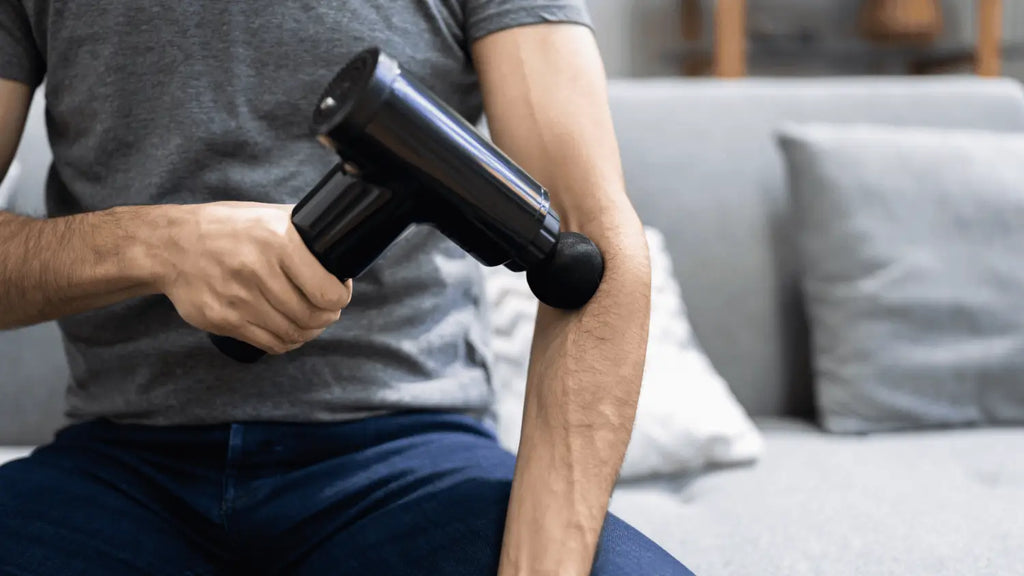
Cibler les bons groupes musculaires
Lors de l'utilisation d'un Massage Gun, il est important de se concentrer sur les groupes musculaires appropriés pour éviter les blessures. Différents groupes musculaires nécessitent différents niveaux de pression, et cibler excessivement des zones sensibles comme les articulations ou les os peut causer de la douleur.
L'utilisation combinée du foam rolling et d'un Massage Gun peut aider à améliorer l'efficacité de la thérapie percussive. Les pistolets de massage doivent être utilisés sur de grands groupes musculaires comme les quadriceps, le dos ou les épaules pour améliorer la récupération.
Timing et fréquence d'utilisation
Le timing et la fréquence d'utilisation d'un Massage Gun sont cruciaux pour une récupération optimale. Beaucoup trouvent qu'il est bénéfique d'utiliser un Massage Gun dans le cadre de leur routine post-entraînement. Utiliser l'appareil dans les 30 minutes à 48 heures suivant l'exercice peut aider à réduire la douleur musculaire retardée et à favoriser une récupération plus rapide.
Cependant, l'utilisation d'un Massage Gun pendant plus de quelques minutes sur une zone spécifique peut provoquer de l'inconfort. Pour de meilleurs résultats, limiter chaque séance à 1-2 minutes par groupe musculaire, en fonction de l'intensité de l'entraînement.
Intégrer les pistolets de massage avec d'autres techniques de récupération
Les pistolets de massage peuvent aussi être efficaces lorsqu'ils sont intégrés à d'autres méthodes de récupération, telles que le foam rolling, les étirements et la thérapie par vibration. Le foam rolling avant d'utiliser un Massage Gun peut aider à détendre les muscles, tandis que la thérapie par vibration peut améliorer la circulation.
Combiner ces techniques peut rendre la récupération plus efficace en traitant différents aspects de la santé musculaire, de la flexibilité à la réduction de l'acide lactique. Pour tirer le meilleur parti de votre routine de récupération, intégrez divers outils qui complètent la thérapie Massage Gun.
Comment les pistolets de massage peuvent-ils influencer la récupération à long terme et la prévention des blessures ?
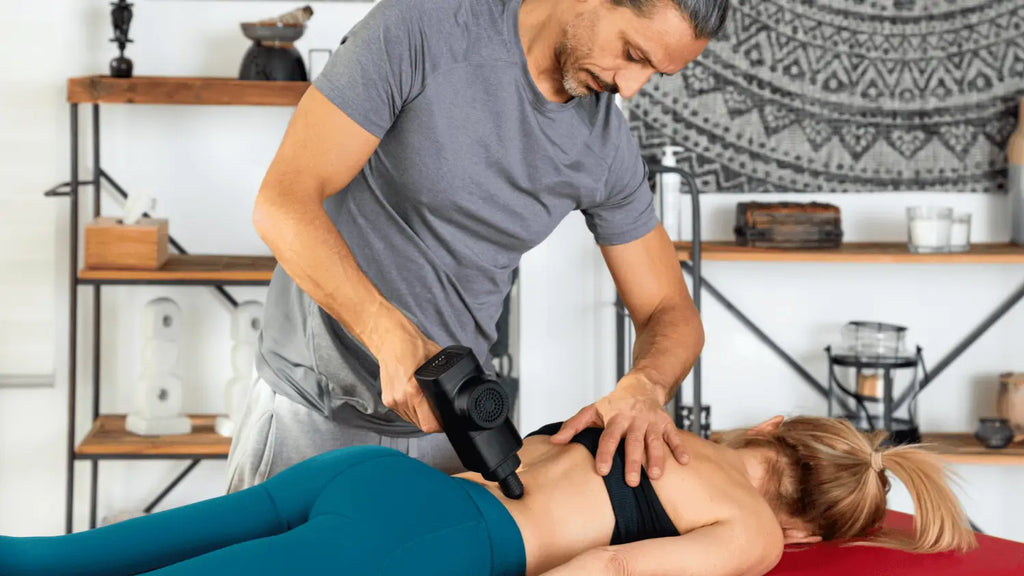
Effets à long terme sur la santé musculaire
Les pistolets de massage agissent non seulement pour la récupération à court terme mais aussi pour la santé musculaire à long terme. Leur utilisation régulière aide à prévenir les blessures en maintenant les muscles détendus et flexibles, ce qui réduit le risque de déchirures ou de tensions.
Avec le temps, les pistolets de massage peuvent contribuer à améliorer la flexibilité, la force et la circulation sanguine, conduisant à une meilleure santé musculaire globale. Pour ceux qui pratiquent fréquemment l'exercice, l'utilisation d'un Massage Gun peut également aider à maintenir une bonne santé musculosquelettique en prévenant la rigidité et en favorisant la relaxation musculaire.
Bénéfices mentaux : réduction du stress et amélioration du sommeil
En plus de leurs bienfaits physiques, les pistolets de massage peuvent aider à réduire le stress et améliorer la qualité du sommeil. En apportant un soulagement des tissus profonds, ils favorisent la relaxation, essentielle pour la récupération musculaire et la santé globale.
Certaines personnes trouvent que l'utilisation d'un Massage Gun avant le coucher les aide à s'endormir plus rapidement et à se réveiller en se sentant revitalisées. Une utilisation régulière d'un Massage Gun peut également contribuer à réduire le stress mental, en faisant un outil précieux pour la récupération physique et mentale.
Choisir le bon Massage Gun en fonction des objectifs de récupération
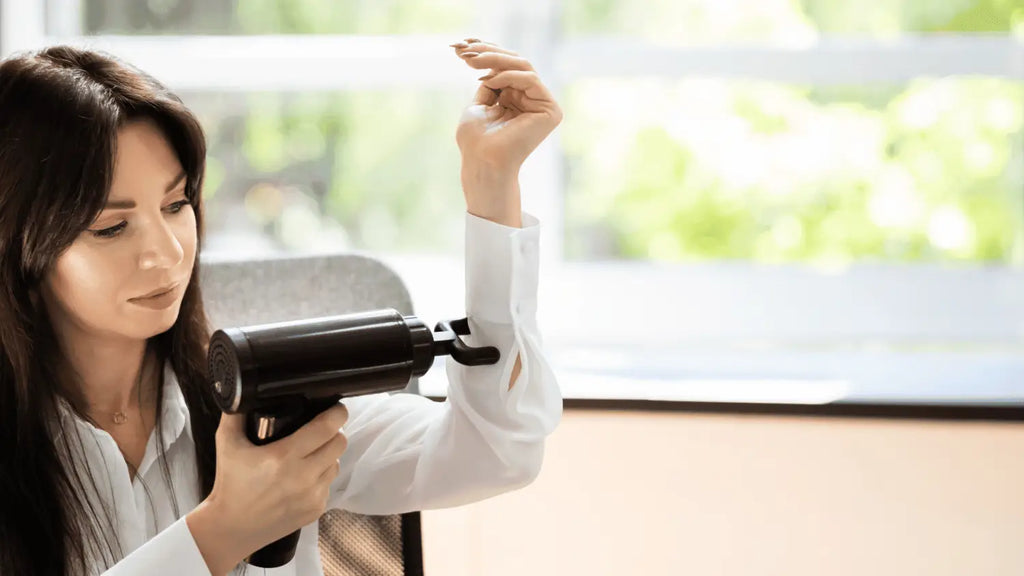
Massage Gun caractéristiques pour un soulagement en profondeur vs. en surface
Lors du choix d'un Massage Gun, il est important de sélectionner celui qui correspond à vos besoins de récupération. Certains pistolets de massage sont conçus pour un soulagement en profondeur, tandis que d'autres sont mieux adaptés à la tension superficielle. Si vous recherchez un traitement en profondeur, un percussion Massage Gun avec plusieurs réglages de vitesse et accessoires peut être le meilleur choix.
Pour ceux qui ont besoin d'un soulagement général de la douleur, un appareil avec une intensité plus faible pourrait suffire. Assurez-vous de choisir un Massage Gun qui correspond à vos objectifs spécifiques de récupération musculaire.
Les pistolets de massage économiques vs. haut de gamme : quels sont ceux qui valent l'investissement ?
Les pistolets de massage sont disponibles dans une large gamme de prix, des modèles économiques aux appareils haut de gamme. Bien que les options économiques offrent des avantages de récupération de base, les modèles haut de gamme disposent souvent de fonctionnalités avancées telles qu'une longue autonomie, plusieurs accessoires et une puissance percussive plus forte.
Si vous prévoyez d'utiliser un Massage Gun fréquemment ou pour des besoins de rééducation spécifiques, cela peut valoir la peine d'investir dans un appareil de qualité supérieure. Cependant, pour les utilisateurs occasionnels, les options économiques peuvent offrir suffisamment de flexibilité et de soulagement sans trop dépenser.
Avantages et inconvénients de l'utilisation des pistolets de massage pour la récupération
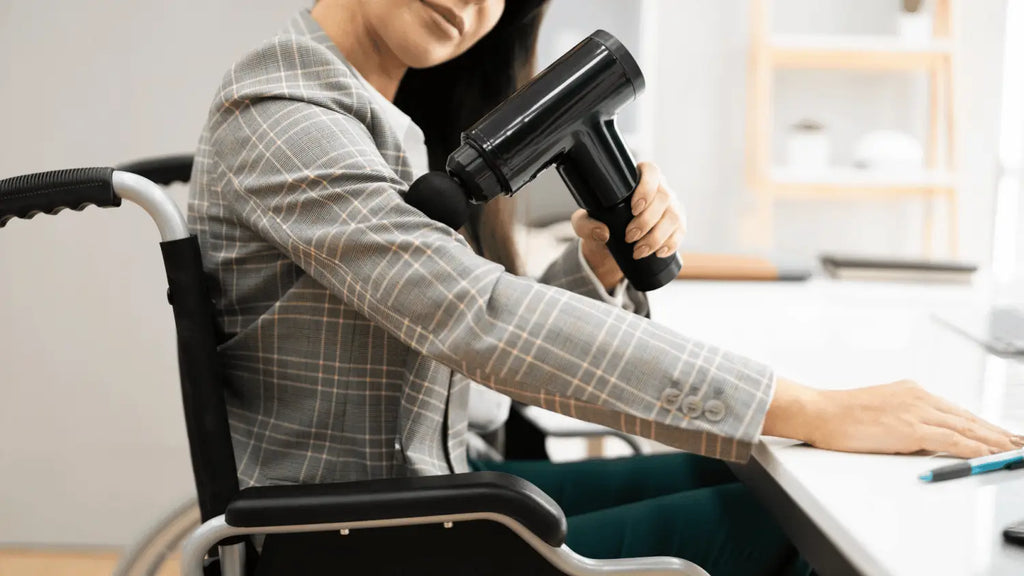
Les avantages : soulagement immédiat de la douleur et commodité
L'un des principaux avantages des pistolets de massage est leur capacité à fournir un soulagement immédiat de la douleur et une grande commodité. Que ce soit à la maison ou à la salle de sport, ces appareils peuvent être utilisés à tout moment, ce qui en fait un excellent outil pour gérer les douleurs musculaires.
Ces appareils sont portables et faciles à utiliser, permettant aux personnes de cibler rapidement et efficacement les muscles douloureux. La commodité des pistolets de massage en fait un élément essentiel d'une routine de récupération pour ceux qui veulent des résultats rapides.
Les inconvénients : risque de blessure et absence de soins personnalisés
Cependant, il existe certains inconvénients à utiliser un Massage Gun, en particulier en ce qui concerne le risque de blessure. Sans guidance appropriée, il est facile d'appliquer trop de pression, ce qui peut entraîner une blessure ou une gêne.
De plus, contrairement à un massothérapeute professionnel, un Massage Gun ne peut pas fournir de soins personnalisés ou ajustés en fonction des besoins individuels. Pour ceux qui ont des conditions spécifiques ou des blessures, il est important de consulter un professionnel de santé pour assurer une utilisation sûre des pistolets de massage.
Conclusion
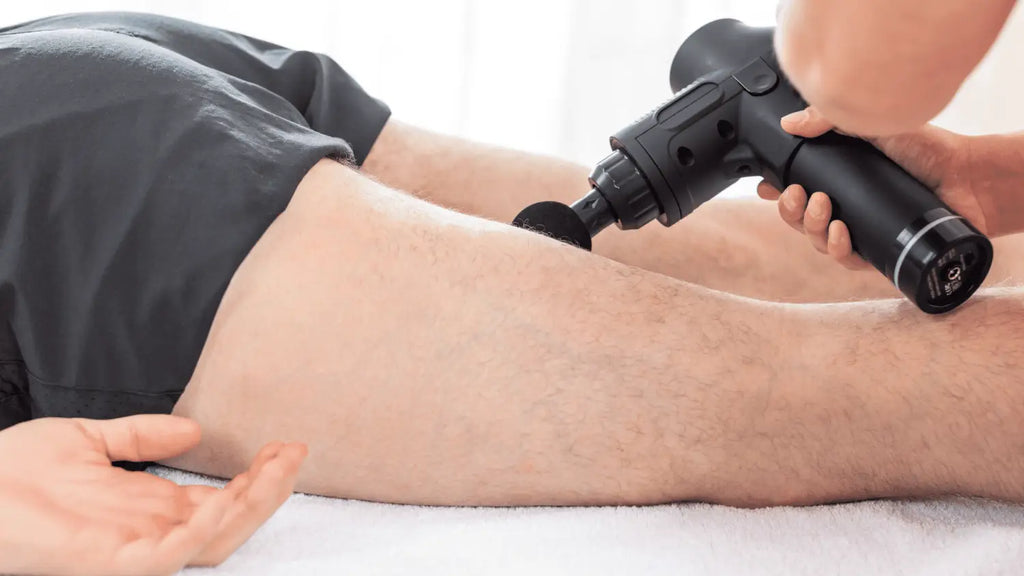
Les pistolets de massage sont un outil efficace pour promouvoir la récupération musculaire, réduire la douleur et augmenter la flexibilité. Ils peuvent aider à soulager la douleur, atténuer la tension musculaire et améliorer la circulation sanguine, ce qui en fait une partie précieuse de toute routine post-entraînement.
Cependant, comme tout outil, leur utilisation correcte est essentielle pour éviter les blessures. Lorsqu'ils sont utilisés correctement, les pistolets de massage peuvent soutenir la récupération et favoriser la santé musculaire globale, ce qui en fait un investissement rentable
Questions fréquemment posées
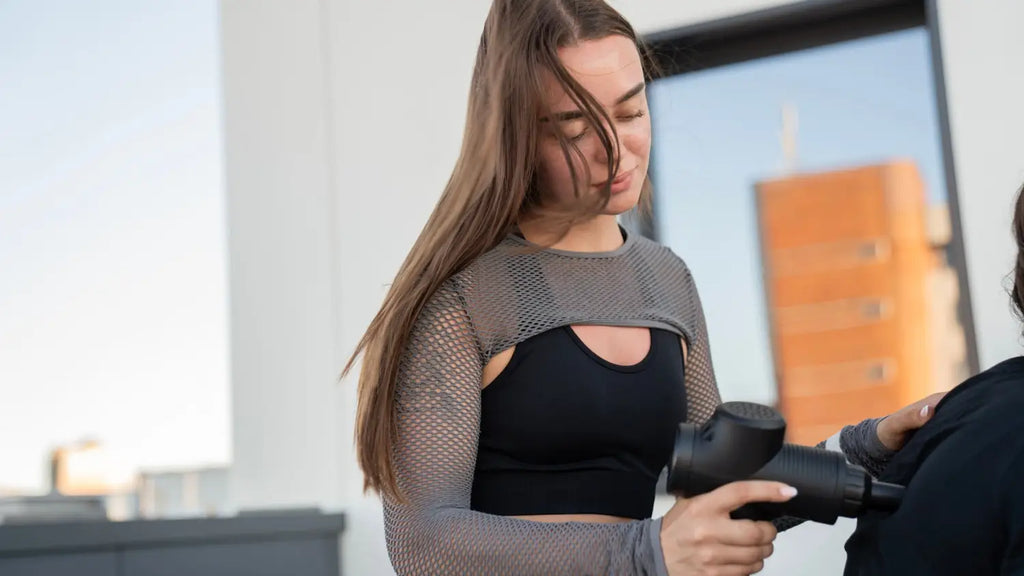
1. Les pistolets de massage aident-ils vraiment à la récupération musculaire ?
Oui, les pistolets de massage peuvent aider à la récupération musculaire en utilisant la thérapie percussive pour augmenter la circulation sanguine, réduire la douleur musculaire et décomposer le tissu cicatriciel après l'exercice. Ces appareils sont efficaces pour la récupération à court et à long terme.
Les experts certifiés en médecine du sport affirment que les masseurs portables ciblent efficacement les muscles douloureux et tendus. Que ce soit après l'effort ou dans le cadre de votre routine post-entraînement, un Massage Gun peut aider à soulager la douleur musculaire, réduire la raideur et favoriser la guérison. Cela les rend bénéfiques pour toute personne souhaitant améliorer la santé musculosquelettique.
2. Comment les pistolets de massage améliorent-ils la circulation sanguine ?
Les pistolets de massage améliorent la circulation sanguine en délivrant une thérapie percussive à tout le corps, en ciblant spécifiquement les zones musculaires. Cela augmente le flux sanguin vers les muscles douloureux et tendus, permettant à plus d'oxygène et de nutriments d'entrer dans le système musculosquelettique, favorisant une récupération plus rapide.
Pour les athlètes ou les passionnés de fitness, une meilleure circulation aide à réduire la rigidité et à favoriser la guérison. L'utilisation régulière de masseurs percussifs peut également aider à prévenir les blessures en maintenant les muscles flexibles et préparés à une activité physique intense.
3. Les pistolets de massage sont-ils efficaces pour réduire la douleur musculaire retardée (DOMS) ?
Oui, les pistolets de massage sont efficaces pour la douleur, en particulier pour réduire la douleur musculaire retardée (DOMS). En appliquant une thérapie percussive sur les muscles douloureux, les masseurs portables aident à réduire la raideur, à soulager la douleur et à améliorer la récupération post-exercice.
Les études publiées dans des revues de fitness montrent que la thérapie par percussion aide à décomposer le tissu cicatriciel, améliorant la flexibilité et accélérant la récupération. Les professionnels certifiés recommandent également d'utiliser des rouleaux de mousse en complément des pistolets de massage pour maximiser les bénéfices et traiter des problèmes musculosquelettiques spécifiques.
4. À quelle fréquence dois-je utiliser un Massage Gun pour la récupération musculaire ?
Pour des résultats optimaux, il est préférable d'utiliser un Massage Gun dans le cadre de votre routine post-entraînement ou dans les 48 heures suivant l'exercice. Une utilisation régulière peut réduire la raideur, aider à la récupération musculaire et maintenir les muscles sans douleur.
Les experts certifiés recommandent d'utiliser la thérapie percussive pendant environ 1-2 minutes par groupe musculaire, en fonction de l'intensité de l'entraînement. Les masseurs portables peuvent être utilisés plusieurs fois par semaine pour la récupération à court terme et la flexibilité à long terme, ce qui en fait un excellent outil lors de la récupération.
5. Les pistolets de massage peuvent-ils prévenir les blessures musculaires ?
Les pistolets de massage peuvent aider à réduire le risque de blessure en relâchant les muscles tendus et en améliorant la circulation sanguine. En intégrant la thérapie percussive dans votre routine post-entraînement, vous pouvez assurer que les muscles restent flexibles et sans rigidité.
Les pistolets de massage sont particulièrement utiles pour traiter les problèmes musculosquelettiques liés à la tension ou à la tension. Les professionnels certifiés recommandent d'utiliser ces dispositifs pour aider à prévenir les blessures, en particulier pour les athlètes ou les personnes pratiquant une activité physique régulière.
6. Comment fonctionne la thérapie percussive dans les pistolets de massage ?
La thérapie percussive fonctionne en délivrant rapidement, une pression répétitive sur le système musculosquelettique, ce qui aide à augmenter la circulation sanguine et à décomposer le tissu cicatriciel. Cette technique cible les muscles tendus et améliore la flexibilité, favorisant la soulagement de la douleur et la récupération.
Les spécialistes certifiés en médecine du sport recommandent souvent la thérapie percussive pour les athlètes car elle est efficace pour réduire la douleur et la raideur. Le mouvement rythmé d'un masseur portable favorise également la guérison et peut être utilisé sur tout le corps, ce qui en fait un outil idéal pour une récupération globale.
7. Les pistolets de massage sont-ils meilleurs que les rouleaux en mousse pour la récupération ?
Les deux, pistolets de massage et rouleaux en mousse, sont utiles pour la récupération musculaire, mais les pistolets de massage offrent un soulagement plus précis et ciblé grâce à la thérapie percussive. Les rouleaux en mousse fonctionnent sur de grandes zones du corps, tandis que les masseurs portables peuvent cibler des muscles spécifiques et tendus.
Le foam rolling est une excellente technique post-entraînement, mais les pistolets de massage offrent l'avantage du massage en profondeur, efficace contre la douleur et pour améliorer la flexibilité. De nombreux athlètes préfèrent les pistolets de massage pour leur routine post-exercice afin d'aider à prévenir les blessures et la récupération musculaire.
8. Puis-je utiliser un Massage Gun tous les jours ?
Oui, vous pouvez utiliser un Massage Gun quotidiennement, surtout si vous ciblez des muscles endoloris ou si vous l'utiliser dans le cadre d'une routine post-entraînement. Une utilisation quotidienne peut aider à réduire la rigidité et à améliorer la circulation sanguine, favorisant une récupération plus rapide.
Cependant, il est important d'éviter d'appliquer une pression excessive, car les experts certifiés mettent en garde que l'utilisation incorrecte peut causer une gêne musculosquelettique. Pour les amateurs de fitness, une utilisation régulière aide à maintenir la santé musculaire et à favoriser la guérison après un effort intense. Pour en savoir plus sur l'utilisation du Massage Gun, consultez un physiothérapeute certifié.
9. Quels sont les avantages des pistolets de massage pour les athlètes ?
Pour les athlètes, les pistolets de massage offrent de nombreux avantages, notamment une récupération musculaire plus rapide, une meilleure circulation sanguine, et une réduction de la douleur post-exercice. En intégrant la thérapie percussive dans leur routine, les athlètes peuvent réduire la raideur et favoriser la guérison après un entraînement.
Utiliser un Massage Gun aide à soulager la tension musculosquelettique, à réduire le risque de blessure, et à cibler des groupes musculaires spécifiques pour une soulagement efficace de la douleur. Que ce soit après l'entraînement ou pendant la récupération, les pistolets de massage peuvent améliorer la performance et favoriser une flexibilité durable.
10. Y a-t-il des risques à utiliser un Massage Gun ?
Bien que les pistolets de massage soient généralement sûrs, il existe certains risques associés à une mauvaise utilisation. Appliquer une pression trop forte peut causer une gêne musculosquelettique ou aggraver des blessures existantes. Les spécialistes certifiés recommandent d'éviter les zones sensibles, comme les articulations ou les os, et d'utiliser un Massage Gun uniquement sur les tissus mous.
Avant d'incorporer un Massage Gun dans votre routine de fitness, il est préférable d'en apprendre davantage sur la bonne utilisation auprès d'un professionnel certifié pour éviter les blessures et maximiser les bénéfices de la thérapie percussive.



